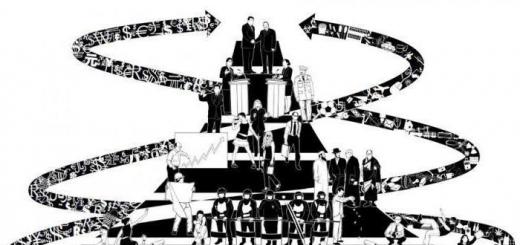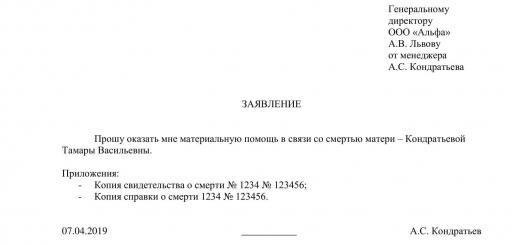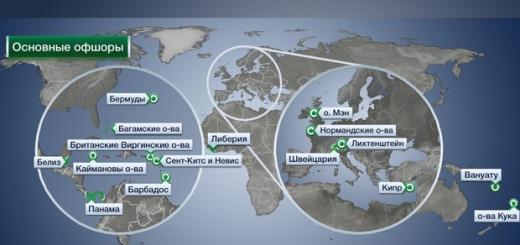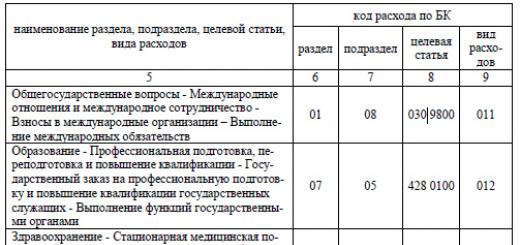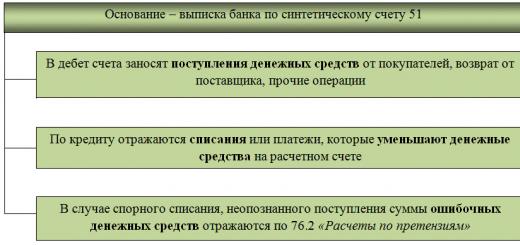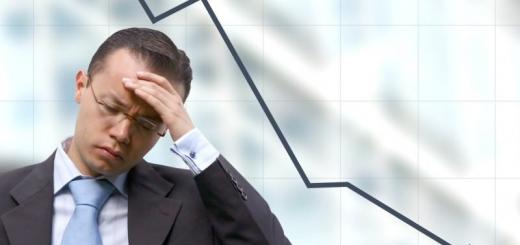Paul Robin Krugman (English) Paul Robin Krugman; genus. February 28, 1953, Long Island, New York) - American economist and publicist, winner of the Nobel Prize in Economics (2008).
Paul Krugman was born on Long Island, New York, to a Jewish family of David and Anita Krugman. He became interested in economics and history as a child under the influence of popular science books by Isaac Asimov. Studied at Yale University; PhD (1977) from the Massachusetts Institute of Technology. He taught there, as well as at Yale, the University of California (Berkeley campus), the London School of Economics, Stanford; currently (since 2000) professor at Princeton University.
Awarded the J.B. Clark Medal (1991). Since 2000, he has been a well-known columnist: he writes an analytical column for The New York Times. Recipient of the Adam Smith (1995), Rechtenwald (2000) and Prince of Asturias (2004) awards. Honorary Member of the Munich Center for Economic Research (1997). Member of the G-30.
In 2008 he received the Nobel Prize in Economics for his analysis of trade patterns and problems of economic geography.
Scientific achievements
His scientific work indirectly affect not only the economy, but also the political system. So, at one time he wrote works on trade policy and market structure, as well as on spatial economics. Such a wide expansion of his scientific views caused a multiple response in the circles of various scientific communities, and not only economic, but also humanitarian ones. He publishes and creates study guides which are in great demand among students of many universities around the world.
Scientific works
According to the Nobel Prize Committee, the prize was awarded for Krugman's work explaining patterns of international trade and geographic concentration of wealth by examining the impact of economies of scale and consumer preferences for various goods and services. In academia, Krugman is known for his work on international economics, including trade theory, economic geography and international finance, liquidity traps, and currency crises. According to the IDEAS/RePEc rankings, Krugman is the 15th most widely cited economist in the world today.
Krugman is the author of over 20 books and has published over 200 scientific articles in professional journals and collections. He has also written over 750 op-eds on current economic and political issues for The New York Times. Krugman's book International Economics: Theory and Policy, co-authored with Maurice Obstfeld, Professor of Economics at the University of California, Berkeley, has become a recognized textbook on international economics. economics for American colleges. In addition, he writes for political and economic topics to the general public, as well as speaking out on a wide range of issues ranging from income distribution to international economy. Krugman considers himself a liberal and has even named The Conscience of a Liberal one of his books and a blog in The New York Times.
Paul Krugman, the son of David (David Krugman) and Anita Krugman (Anita Krugman) and the grandson of Jewish immigrants from the Belarusian Brest (Brest, Belarus), was born February 28, 1953 in Albany, New York (Albany, New York). He grew up in Nassau County, New York and graduated from John F. Kennedy High School in Bellmore. He is married to Robin Wells, a yoga instructor and academic economist who worked with her husband on textbooks. This is his second marriage. Krugman also mentioned that he was distantly related to conservative journalist David Frum. In his own words, his interest in economics began with Isaac Asimov's Foundation cycle of novels, in which future scientists used the fictional science of psychohistory in an attempt to save civilization. Since there was no psychohistory in the sense that Asimov meant by this word, Krugman turned to economics, which he considered the second best science in the world of knowledge.
Krugman received a bachelor's degree in economics from Yale University in 1974 and a PhD from the Massachusetts Institute of Technology (MIT) in 1977. During his time at MIT, Krugman was part of a small group of students assigned to work at central bank Portugal (Central Bank of Portugal) for three months in the summer of 1976, two years after the Carnation Revolution.
From 1982 to 1983, he worked for the administration of President Ronald Reagan on the Council of Economic Advisers.
Krugman has taught at Yale, MIT, UC Berkeley, the London School of Economics and Stanford University, and in 2000 became a professor at Princeton. In addition, he is a member of the so-called "Group of Thirty" (Group of Thirty), an international economic organization. Krugman has been a Fellow of the National Bureau of Economic Research since 1979, and most recently Dr. Krugman served as President of the Eastern Economic Association.
Send your good work in the knowledge base is simple. Use the form below
Students, graduate students, young scientists who use the knowledge base in their studies and work will be very grateful to you.
Hosted at http://www.allbest.ru
Paul Krugman
Paul Robin Krugman was born February 28, 1953 in Long Island, New York. American economist and publicist, winner of the Nobel Prize in Economics (2008). Paul Krugman, whose number of articles in leading scientific journals can be counted on the fingers; all his serious publications fall on the period of the 1970s to the early 1990s, i.e. approximately from the time of graduation from graduate school until the age of forty. Krugman received his Nobel Prize for achievements in two related topics - the theory of international trade and the theory of the geographical distribution of economic activity. These two theories are discussed sequentially in this paper.
The exact wording of his Nobel Prize was: "for his analysis of trade patterns and location of economic activity", or "For the analysis of the structure of trade and the location of economic activity."
The main problems that the economist raises in his articles, as well as those main problems for the study of which he was given the Nobel Prize: Krugman Nobel economist
First of all, it is economic geography, as well as the effect of returns to scale.
Secondly, his critique of the current economic situation in both the US and Europe, in matters relating to: unemployment, external public debt, aggregate demand and developing countries.
Krugman's main work was to create a "new international economy". The main prerequisite for the creation of this model was the problem of similar-similar goods. The essence of the trade in like-like goods was that before the Second World War, the main trading partners were dissimilar countries that traded unlike-dislike goods. For example, if a country did not have the capacity to produce wine, it would buy that wine from other countries, trading in goods that it could produce but others could not. This trading model is fully explained by Ricardo's theory of comparative advantage, later expanded by Heckscher and Ohlin. However, over time, there has been a trend towards intra-industry trading. For example, cars of different brands. And this model was considered by Krugman in his theory, trade in similar-similar goods, since the theory of comparative advantages could not explain such trade.
What is the "new international trade"? First, these are positive theories of international trade that take into account domestic economies of scale and the factor of monopolistic competition, integrating them into the structure of general equilibrium models. Although it can hardly be argued that the consideration of economies of scale is something new in the theory of international trade: its real novelty lies in the simultaneous inclusion of economies of scale and monopolistic competition in the formal framework of general equilibrium analysis.
A really new contribution to trade policy theory is the consideration of oligopoly and strategic interactions between private firms rather than between governments. In this context, the key model was first proposed by J. Brander and B. Spencer in 1985. This model and a discussion of its limitations are presented in Krugman's book Trade Policy and Market Structure. Briefly, the essence of this model is as follows: two firms - domestic and foreign - compete in the market of a "third" country, selling goods that are not sold in their own markets.
The number of firms is fixed, that is, new firms cannot enter the market being attracted by high profits. The model is formulated in such a way that the only factor that matters for the national welfare of both countries is the profit of both firms, minus subsidies or taxes. In both states wage and (at the first stage of the analysis) profit before tax are fixed. The goal of national policy is to redistribute profits from the foreign firm to the domestic firm, although there may be a parallel redistribution of income from the country's taxpayers to the owners of domestic firms. The size of the market for combined production is fixed; consumers compete with each other. The government of the "third" country is kept from interfering. The higher the output of one firm, the lower the profits of the other.
Krugman also considered the traditional argument for protectionism, which is built on the concept of terms of trade and which can be interpreted as evidence in support of an export tax. The economist believed that the introduction of a tariff could lead not only to the substitution of imports by domestic production, but also to the stimulation of exports.
Two firms compete in different markets (including domestic ones), playing "according to Cournot" and facing economies of scale. The national government protects the firm of its state in the domestic market. Such protection can be interpreted as a kind of subsidizing. Naturally, this redistributes profits from the foreign firm to the domestic firm. The domestic firm's marginal cost falls, while the foreign firm cuts production and its marginal cost rises. As a result, the domestic firm expands its exports. Thus, P. Krugman shows that import protection acts as a tool to promote the development of exports.
In 1990, Krugman made formulated a three-period model. Its essence was that: in the first period, entrepreneurs "invest" valuable resources in innovations that reduce costs. Those who are successful in this receive a temporary monopoly on their new technology in the second period; they have a rent due to the cost advantage over the producer who still uses the old technology. In the third period, this innovation becomes common property, and the source of rental income disappears. Such out-of-phase sequences can be "brought together", which in turn gives a picture of a continuous process.
Krugman's second most important discovery is his geographic concentration model. In his Nobel lecture, the economist explains it this way:
“We assume that the manufacturer has established sales of S, S* units in two markets, with S > S*. And it must pay the shipping costs f for each unit shipped from one location to another. The manufacturer has the choice of having either one or two plants; by opening a second plant, the manufacturer can eliminate transportation costs, but must pay additional fixed costs F.
Clearly, if the manufacturer opens only one plant, it will be in a larger market.
But will it concentrate production? Only if F> fS*.
It goes without saying that this little display ignores market structure, prices, elasticity of demand, and more. But we know we can put it back in, as Dixit-Stiglitz does quite well, and the hoax version conveys an essential intuition: if the economies of scale, as noted by F/S*, are large enough compared to transportation costs, production will be geographically concentrated, and that concentration, other things being equal, will be in the larger market.
Hence the obvious, short step (which for some reason took me a decade) to the geographic factor concentration model. Think now of a world in which there are many businesses making the same kind of choices I just described, and also where some but not all resources are mobile. Let S be the size of the overall market, m be the "free" production share of that market, and assume there are two symmetrical locations. Then we can think of a possible equilibrium in which all free factors are concentrated in one place. In this case, another location - a smaller market - would require S(1 - m)/2 units of our representative item.
And this concentration of production would be self-sustaining if F> fS (1 - m)/2, or F/S> f (1 - m)/2. Thus, this is our criterion for creating a self-sustaining concentration of production in space.”
Krugman also lists two conditions for the model to work correctly:
1. Self-sustaining concentration of production in space can occur if economies of scale (F/S) are large, transportation costs are low, and sufficient production is mobile.
2. Which location the concentration of production will take is arbitrary, and may be presumably a function of initial conditions or historical chance.
Krugman's activities do not end with the analysis of international trade. The Nobel laureate is considered the world's leading economist, and also contributes his comments to the current order of things in the economy. Krugman presented a large number of articles in which he speaks about existing economic problems and ways to solve them. The main place in his statements is occupied by criticism of the actions of the authorities of both the United States and Europe. The economist believes that the problem of the modern economy is not state debt, A aggregate demand and unemployment. Here's what Krugman says about it: “The real problem for developed countries is insufficient spending. And at a certain level, the solution to this problem does not look like something very complicated. After all, it is not only simple, but also pleasant - to spend more. But the problem is that the increase in spending should start with the state. But this, unfortunately, is not happening - for political reasons. America is now in political stalemate and intellectual turmoil. Many people care about the budget deficit, and somehow it turns out that unemployment does not bother them.”
With regard to the Belarusian economy: according to Krugman, in order to stay afloat, it is desirable for Belarus to avoid large debts. It is also encouraging to join the single economic space with Russia, Ukraine and Kazakhstan, free trade.
Krugman's policy on the problem of getting out of the crisis is to stimulate demand. The economist believes that neither government debt nor high inflation kills the economy the way a decline in demand does. “The cost of one is the profit of the other,” says Paul Krugman. The Belarusian economy is well adapted to such conditions of overcoming the crisis. Public policy at the moment it is aimed at improving the quality of life of citizens: the level of wages is increasing, markets and labor supply are increasing. There is a reduction in unemployment.
Speaking of the new international trade model, it is possible only in the case of large economies of scale, that is, in relation to large enterprises with a large sales market.
Simply put, his models were designed more for large developed countries than for emerging countries. In addition, the international trade of Belarus is reduced more to trade in dissimilar, dissimilar goods. Therefore, we can say that his ideas are very relevant at the present time for countries with a large sales market, a large volume of goods, as well as with predominantly similar-similar international trade.
To implement his ideas in the practice of Belarusian foreign trade, it is necessary to significantly change the structure of trade, i.e. make it more like the European and American trade in similar-like goods. However, Belarus is not yet ready for such a policy and is unlikely to be ready in the future. For such a step, Belarus needs a large resource base and high-tech production.
List of sources used
Revolution of increasing returns in trade and geography. Nobel lecture, December 8, 2008. Access mode: http://n-mir.org/index.php?option=com_content&task=view&id=635&Itemid=31. Access date: 11/25/2012.
American economist Paul Krugman. Access mode: http://www.kazedu.kz/referat/95814. Access date: 11/25/2012
Hosted on Allbest.ru
...Similar Documents
Disputes in the scientific world over the awarding of the Nobel Prize in Economics. Candidate nomination requirements. Stages of choosing the winner of the next award. The merits of V. Leontiev, F. Modigliani, R. Coase, P. Krugman and Jan Tinbergen in economic science.
term paper, added 01/18/2012
Life and work of Gerard Debreux - American economist, Nobel Prize winner in 1983. Studying the influence of the work of Gerard Debreux on the development of the theory of equilibrium and the conditions for its existence. The Debreux model and the real economic situation.
abstract, added 06/17/2015
J.M. Buchanan, Jr. as an American economist, Nobel laureate "for his study of the contractual and constitutional foundations of the theory of economic and political decision making." The theory of public choice, its content and principles, the contribution of the scientist.
presentation, added 04/16/2015
Professiogram of the specialty "economist". Justification and rules for choosing a profession. Requirements and main tasks to be solved by profession "economist". The main types of professional activity of a specialist. About the universities: NSUE, Berd branch of NSTU.
abstract, added 12/13/2010
Economist as a vocation and profession, features of their origin and formation. Job duties, as well as the rights and responsibilities of an economist. The content of professional activity and analysis of modern requirements for it.
report, added 04/06/2014
The history of the creation and significance of the Nobel Foundation. Requirements for nominating candidates. Winner selection process. List of Nobel Prize winners in economics, including Russian nominees. Components of the Nobel Week. Award of the Ig Nobel Prize.
abstract, added 05/20/2009
Theory of human capital. The division of labor in the family and the analysis of the "marriage" market. Economic theory of discrimination and fertility. Gary Becker as an American economist who was awarded the Nobel Prize in Economics. Economic analysis of crime.
abstract, added 04/22/2010
Ragnar Anton Kittil Frisch - Norwegian economist, professor, 1969 Nobel Prize winner in the field economic analysis and modeling, the founder of econometrics. Brief biography, distinctive features of scientific research; special merit.
presentation, added 11/19/2014
The essence of the Nobel Prize in Economics, its establishment. Requirements for applicants for the Nobel Prize, data on existing economics prize winners. The chances of Russian scientists-economists in receiving the Nobel Prize in Economics.
abstract, added 10/24/2009
General concepts of the profession "Economist". Specific features inherent in the economic profession. Basic requirements for candidates. Types of professional activity of a specialist. Performing calculations for material and financial costs.
SCIENTIFIC LIFE
Paul Krugman: Nobel laureate, theorist of international trade and economic geography
Zakharenko R.L.
The article describes the main works of Paul Krugman, 2008 Nobel Laureate in Economics: a new theory of international trade and a new theory of economic geography. The prerequisites for the creation of new theories, as well as their development by Krugman's followers, are considered.
Key words: increasing returns to scale, international trade, monopolistic competition, economic geography, agglomeration effect.
Introduction
All Nobel laureates in the field of economics can be divided into two types. Some, like Gary Becker or James Heckman, receive an award for a range of scientific achievements made over decades. Others, like John Nash or George Akerlof, win the prize for one or two brilliant papers that have changed the way economists think about the world we live in. Paul Krugman, perhaps, should be attributed to the second type of Nobel laureates - the number of his articles in leading scientific journals can be counted on the fingers; all of his serious publications fall on the period from the late 1970s to the early 1990s, i.e. approximately from the moment of graduation from graduate school until the age of forty. Krugman received his Nobel Prize for achievements in two related topics - the theory of international trade and the theory of the geographical location of economic activity. These two theories are discussed sequentially in this paper.
International trade: background
For most of the twentieth century. The theory of international trade was based on the works of David Ricardo, published in early XIX V. and supplemented by Eli Heckscher and Bertil Ohlin in the 1920s. According to this theory, the main mo-
_______________________
Zakharenko R.L. – Associate Professor, International Institute of Economics and Finance. The article was submitted to the Editorial Board in January 2009.
SCIENTIFIC LIFE |
The torus of international trade is the comparative advantages of countries in the production of certain goods. If England is good at making wool and Portugal is good at making wine, then England must export wool to Portugal in exchange for wine. The theories of Ricardo and Heckscher-Ohlin explain the reason for the existence of inter-country differences in different ways (according to Ricardo, comparative advantages are determined by inter-country differences in labor productivity, according to Heckscher and Ohlin - the difference in stocks of factors of production), but the main conclusion of these two theories is the same: than the less similar two countries are to each other, the greater should be the exchange of goods between the two countries. Two identical countries should not trade with each other.
However, after the Second World War, theory began to rapidly diverge from practice. By the end of the 1960s. it became clear to economists that the largest volumes of trade occurred precisely in regions very similar to each other - North America and Western Europe, which traded with each other much more than with dissimilar Third World countries. Moreover, much of the trade between developed countries was and remains "intra-industry" (intraindustry trade), i.e. often two countries X and Y sell almost identical goods to each other, for example cars of different brands. Such trade flows cannot be explained within the framework of the Ricardo-Heckscher-Ohlin theory, and therefore in the 1960s. there was a demand for a new theory of international trade. A number of economists (in particular, Bela Balassa, Herbert Grubel) already then offered a verbal description of the main components of the new theory, subsequently used by Paul Krugman.
Briefly, their ideas were as follows. First, production is characterized by increasing returns to scale - the more a firm produces, the cheaper it is to produce a unit of output. Thus, a dozen auto giants supplying cars around the world will make these cars better and/or cheaper than a few hundred small national manufacturers. Secondly, different firms produce slightly different goods (for example, different brands of cars), and therefore the market is characterized not by perfect, but by monopolistic competition. Therefore, cars made in the USA and Germany can be simultaneously sold in the markets of both countries, creating counter flows of similar goods.
Similar ideas of a new theory of international trade have been in the air for more than a decade, waiting for a researcher to formalize these ideas in the form of a mathematical model. That person was Paul Krugman, a young professor at Yale University. However, Krugman did not create a model from scratch - he skillfully used the discoveries made shortly before him.
Dixit–Stiglitz preferences
Major scientific advances are often based on previous discoveries. Krugman's "guiding star" was the Dixit-Stiglitz preference function, formulated in 1977 and inspired, in turn, by the power mean formula (Minkowski mean). The Dixit-Stiglitz preference function, in a simplified form, looks like this:
e x σ |
ù σ |
|||
êê |
ú ú . |
|||
ë êi =1 ,...,n |
||||
HSE ECONOMIC JOURNAL |
This function allows you to create models with an arbitrary number of similar but different products i , and the elasticity of substitution of one product for another is uniquely determined by the parameter σ . The demand for product i , depending on its price p i and prices for other products p j , looks like this:
x = Kp |
|||||||
å p − j |
|||||||
j =1,...,n
Where Y is the total income/expenditure of consumers; the expression in the denominator (3) can be interpreted as a general price index.
Such a preference function is very convenient for modeling monopolistic competition: each firm produces its own product i ; because the products are slightly different, firms sell their product at a price above marginal cost, which allows them to cover the fixed costs of production. The number of firms (and, accordingly, goods) n is endogenous and is determined by the zero profit condition.
Krugman model
It was this scheme that Krugman used in his articles. His model of the firm is fantastically simple: the labor cost of producing x i units of a good by firm i is
li = α + β xi ,
Here α are fixed costs and β are marginal costs. This formulation implies increasing returns to scale - the larger the output x i , the lower the average cost l i /x i . Each firm, maximizing its profit, sets a price
(4) p i = w σ β ,
ãå w is the wages of workers, which can be taken equal to one1) . As mentioned above, the number of firms (and, accordingly, goods) n is determined by
lyatsya within the model. If there is only one firm on the market (classical monopoly model), the demand for its products is high due to the absence of competitors (large value of the parameter K ), this firm sells a lot and, as a result, has low average costs and high profits. Large profits attract new firms to the market, each of which offers its own variety i of the product. As the number of firms increases, the sales of each of them fall, which increases the average cost of production. The process continues until the average cost equals the price.
1) Formula (4) does not take into account the influence of p i on the parameter K . If the number of firms n is large enough, this influence can be neglected.
SCIENTIFIC LIFE |
Effects of international trade
Suppose now that two countries, each with, say, ten firms, start trading with each other. Now, instead of two small markets, one big one appears. The effects of such consolidation, as it is easy to prove, are the following:
∙ the number of firms represented in the market of each of the countries is increasing - in addition to domestic ones, foreign manufacturers also appear. Instead of ten, the number of firms becomes, say, fourteen;
∙ the total number of firms in the world is declining - in this case, from twenty to fourteen;
∙ each of the remaining firms in the market becomes larger and, as a result, more efficient.
The predictions of the model fit well with the practical experience of Western countries - the removal of trade barriers after the Second World War led to the consolidation and globalization of business, as well as the withdrawal of a large number of manufacturers from the market.
Unlike the Heckscher-Ohlin theory, according to which globalization creates both winners and losers, Krugman's theory predicts that virtually all participants benefit from globalization - by lowering average production costs and bringing a greater range of products to the market. The losers are probably only the top managers of closing firms, whose role is not formalized in any way in the model. Workers from closing firms simply move into larger firms.
However, do not forget that the Krugman model was created primarily to describe trade between industrialized countries; to explain trade between rich and poor countries, the Heckscher-Ohlin theory is still valid. This was well understood by Paul Krugman himself, who repeatedly emphasized that his theories were of little use to developing countries.
After Krugman: Mark Melitz and Modern International Trade Theory
Until the 1990s The main unit of analysis in the theory of international trade was the state. In the 1990s, thanks to new and more detailed data, research interest began to gradually shift to studying the impact of trade on specific firms. In Krugman's theory, as we saw above, firms were also present, but they were perfectly symmetrical, which is in stark contrast to reality: in practice, we observe a huge difference in the size and productivity of firms coexisting in the market. For example, the world-class giant McDonald's and private entrepreneurs selling at the station are simultaneously present in the fast food market. In addition, not all firms enter the export market at the same time, as in the Krugman model, but only the most productive and, as a rule, the largest; small firms in the process of globalization become even smaller or even close.
To explain all these facts, the model with symmetrical firms is no longer adequate; thus, at the turn of the millennium, there was a demand for a new theory in which large and small firms coexist, with the former becoming larger and entering export markets in the process of globalization, and the latter becoming smaller or disappear altogether.
HSE ECONOMIC JOURNAL |
This theory was proposed by Marc Melitz, then a graduate student at the University of Michigan, in 1999 (published 2003). The main elements of the Melitz model - Dixit-Stiglitz preferences, the presence of fixed production costs - coincide with the Krugman model. The main difference is that
that the marginal cost of production β is not the same for all firms, as in Krugman, but is distributed according to some distribution function. Least
efficient firms (for which β is higher than a certain threshold determined within the framework of the model), unable to withstand competition, leave the market, others remain and
earn a positive profit. To find out his β, an entrepreneur must incur some one-time expenses for organizing a business; in equilibrium, these costs are exactly equal to the expected profit from the business.
With globalization, the threshold value of costs β decreases, i.e. the relatively inefficient firms that survived the isolated economy must now close.
Of the surviving firms, not all become exporters - due to the existence of additional fixed export costs, entering foreign markets becomes the lot of the few most efficient firms.
Melitz's model became instantly popular among international trade economists, just like Krugman's model twenty years earlier. It is possible that in another twenty years Melitz will receive the award won by Krugman last year.
Krugman and geography
Having received fame in the early 1980s as an innovator of the theory of international trade, in the early 1990s. Krugman became famous again - as an innovator in the theory of economic geography.
The theory of economic geography arose in the first half of the 19th century. Its founder is considered to be the German scientist Von Thünen, who studied the issue of the optimal use of land around cities. Von Thunen, however, did not say anything about where these cities come from - he considered their existence an axiom. The answer to this question, however, is not at all trivial - indeed, why do the populations of countries gather in several large centers, and are not distributed evenly throughout the country? In Russia, according to a rough estimate, 95% of the population lives in 5% of the country's territory. Even if only European temperate Russia is considered, a high concentration of population at a few points is evident. The first theoretical explanation of this fact was proposed by Alfred Marshal at the beginning of the 20th century; he identified three main reasons.
∙ Entrepreneurs try to locate their production, ceteris paribus, close to the sales market, as well as close to the main suppliers. This leads to a concentration of production. Concentration, in turn, attracts more and more new producers.
∙ In a large labor market (i.e. in big cities) it is easier to find highly specialized workers - for example, actors for a theater or journalists for a newspaper. Thus, all people of similar professions are concentrated in cities.
∙ In big cities, due to more intensive interaction of people, new knowledge is acquired faster; residents of big cities have better access to information; new knowledge and technologies are being created faster.
SCIENTIFIC LIFE |
Krugman formalized the first of these ideas as an economic model. Paradoxically, the Dixit-Stiglitz preference function again helped him in this.
According to the Krugman agglomeration model, there are two types of goods in the economy: industrial (subscript M ) and agricultural (A ). Moreover, agricultural goods are assumed to be standard (i.e., all firms produce the same thing), while industrial goods produced by different firms differ from each other. The consumer utility function looks like this:
U = C M μ C A μ −1, |
|||
ù σ |
|||
C M = |
|||
ê ê å x σ |
ú ú . |
||
ë êi =1 ,...,n |
|||
Here, the total utility (5) is the standard Cobb-Douglas function, and the function (6) is composed in the spirit of Dixit-Stiglitz preferences and can be considered as some kind of utility from the consumption of manufactured goods.
The production of agricultural goods is characterized by constant returns to scale. For simplicity, let's assume that one farmer can produce one unit of agricultural commodity. The production of manufactured goods works in the same way as in the Krugman model of international trade: in order to produce x i units of goods, firm i must hire l i = α + β x i workers, which actually means increasing returns to scale. It is assumed that peasants can only produce agricultural goods, and workers only industrial goods, so wages in the two sectors may differ.
Further, says Krugman, suppose the world consists of two regions, 1 and 2, that differ only in the number of workers, L 1 è L 2 . There are some costs associated with transporting goods from one region to another - for simplicity, Krugman assumes that a certain fixed proportion of the goods disappears, or "melts", during transportation. The equilibrium in the model consists of the following components:
∙ the salary of peasants in both regions is equated to one, respectively, the market value of agricultural goods is also equal to one;
∙ the price of industrial goods, as in the model of international trade, is determined by formula (4);
∙ the number of firms (and goods) in the market is determined by the condition of zero profit of firms;
∙ the wages of workers are determined by the condition of their full employment. Suppose the majority of workers are concentrated in region 1 (i.e., the ratio
the solution L 1 / L 2 is large). In which region will the salary be higher? The answer is ambiguous, since two opposite effects affect wages:
∙ in the first region there are many workers, larger firms and, accordingly, higher labor productivity (agglomeration effect). This increases the wages of workers in the first region relative to the second;
∙ in the second region there are few suppliers of industrial goods (transportation from the first region is expensive), with the same number of peasants consuming industrial goods. Accordingly, local workers are "scarce", which increases their wages relative to wages in the first region.
HSE ECONOMIC JOURNAL |
Suppose now that workers can move from one region to another. Their decision will depend on the level of nominal wages, as well as on the general price level, which, other things being equal2), is lower in more than major region. Thus,
∙ if transport costs are low and increasing returns to scale are significant, workers will move from region 2 (where there are few) to region 1 (where there are already many), and eventually all workers may end up in region 1. In effect, agglomeration will occur: region 1 will turn into an industrial center,
à region 2 - to the periphery;
∙ if, on the other hand, transport costs are significant and economies of scale are negligible, workers will be distributed equally between the two regions.
As in the case with new theory international trade, Krugman's work in economic geography seemed unusual, yet simple and intuitive. In addition, the proposed mathematical formulation turned out to be quite convenient and universal for numerous modifications and upgrades that subsequently appeared in large numbers. It can be said without exaggeration that Paul Krugman revived the interest of the scientific community in economic geography and the theory of the location of economic activity.
Journalism: Krugman on the need for mathematical modeling
For the past decade and a half, Paul Krugman has been more of a publicist than a scientist. He became known to the general public in the United States long before receiving the Nobel Prize as a columnist for the New York Times. Krugman's colleagues note his extraordinary ability to explain complex things. plain language. Avinash Dixit (co-author of Dixit-Stiglitz Preferences) wrote: "Even if he were not a particularly valuable academic economist, he could have made a career as a translator from economic English to spoken English."
In particular, Krugman gave an unusual and simple explanation for the decline in interest in the theory economic development 3) in the late 1950s. and its subsequent revival in the late 1980s. He compared the evolution of economic development theory to the evolution of cartography. In the XV-XVI centuries. the entire territory of Africa was mapped. Of course, the quality of the maps left much to be desired, they gave distorted ideas about the distances between settlements, but still there was, by and large, all the information about the continent. In the 18th century, however, the situation changed: on the one hand, the quality of information about the coastline increased, on the other hand, territories far from the ocean completely disappeared from the map - the entire interior of the continent turned out to be a “blank spot”. The explanation for this fact is very simple: by the XVIII century. there were methods of exact determination of coordinates. Because of this, the quality of coastline information has increased; because of this, the general requirements for the quality of maps increased, and cartographers no longer wanted to publish information about the African outback, based solely on rumors and stories of travelers. Over time, by the 19th century, the map of Africa became complete again, as accurate data about the outback also appeared.
2) First of all, with equal nominal wages.
3) Economic Development is a theory that studies the reasons for the lagging behind of third world countries.
SCIENTIFIC LIFE |
Much the same thing, Krugman argues, happened to the theory of economic development. By the middle of the twentieth century. this theory was predominantly verbal. However, other areas of economics were rapidly “mathematizing” due to the improvement in the quality of empirical data and the increasing level of mathematical training of economists. As a result, against the background of other areas of economics, the theory of economic development began to look less convincing, and interest in it fell.
In the late 1980s this theory was revived due to the emergence of formal economic models. For example, in 1989, economists Murphy, Shleifer, and Vishny formalized the well-known Rosenstein-Rodan theory of the “big push”, created in the late 1940s. Thus, the theory of economic development returned to the general map of economic thought, drawn up according to new, mathematicized standards.
Conclusion
As his colleague Anivash Dixit wrote about Krugman, Krugman's theories were always timely, simple, and convenient for many applications. The reaction of fellow economists to Krugman's model was, in Dixit's words, "a mixture of admiration and annoyance." Apparently, such a reaction is an essential feature of any revolutionary idea.
BIBLIOGRAPHY
1. Dixit A. In Honor of Paul Krugman: Winner of the 1991 John Bates Clark Medal. (http://web.mit.edu/krugman/www/dixit.html)
2. Dixit A., Stiglitz J . Monopolistic Competition and Optimum Product Diversity // American Economic Review. 1977. No. 67.
3. Fujita M., Krugman P., Venables A. The Spatial Economy. Cities, Regions, and International Trade. The MIT Press, 2000.
4. Krugman P . Increasing Returns, Monopolistic Competition, and International Trade // Journal of International Economics. 1979. ¹ 9.
5. Krugman P . Scale Economies, Product Differentiation, and The Pattern of Trade // American Economic Review. 1980. No. 70.
6. Krugman P . Intraindustry Specialization and the Gains from Trade // Journal of Political Economy. 1981. ¹ 91.
7. Krugman P . History Versus Expectations // Quarterly Journal of Economics. 1991.
No. 106.
8. Krugman P . Increasing Returns and Economic Geography // Journal of Political Economy. 1991. ¹ 99.
9. Krugman P. The Fall and Rise of Development Economics. (http://web.mit.edu/krugman/www/dishpan.html)
10. Melitz M. The Impact of Trade on Intra-Industry Reallocations and Aggregate Industry Productivity // Econometrica. 2003. No. 71.
11. Murphy K., Shleifer A., Vishny R.. Industrialization and the Big Push // Journal of Political Economy. 1989. No. 97.
On October 13, the Nobel Prize in Economics 2008 was awarded to Princeton University professor Paul Krugman. In an official statement, the organizing committee said that he was awarded the "for his analysis of trade patterns and location of economic activity" award. For his theory explaining the impact of globalization and free trade on world economy, professor, journalist and writer will receive 10 million Swedish kronor - about one and a half million dollars.
The theory of Paul Krugman, who is called one of the most famous modern economists, was developed back in 1979. It is based on the premise that the cost of producing many goods can be reduced by high volumes of production. This is the so-called economies of scale. Taking into account consumer demand for various types of goods, small-scale production for the local market is gradually being replaced by large-scale production for the global one.
In conditions of large-scale production, trade expands not only between countries specializing in different types of goods (according to traditional economic theory). According to Krugman's theory, states that are gradually becoming dominant in the market are not only at the same stage of economic development, but also specializing in the export and import of any product. In turn, this leads to a decrease in product prices (due to the competition of economies in the world market).
Formally, the Nobel Prize in Economics is not a Nobel Prize. It was established by the Bank of Sweden in 1968 in memory of Alfred Nobel. The first such prize was awarded in 1969 to Ragnar Frisch (Norway) and Jan Tinbergen (Netherlands) "for the development and implementation of dynamic models in analysis economic processes".
Krugman's theory also explains the reasons for the urbanization of the world economy. Large-scale production on the one hand, and the struggle to reduce transport costs, on the other hand, lead to the fact that an increasing part of the population gravitates towards megacities. The growing population of cities, in turn, stimulates the development of the economy and the growth of production, which, closing the circle, lead to a further increase in the number of inhabitants. As a result, the regions are gradually divided into high-tech "core zones" and less developed "periphery".
Economist, teacher, writer
Paul Robin Krugman was born in 1953 in New York and studied at Yale University. He also received his Ph.D. from the Massachusetts Institute of Technology (MIT). Krugman has taught at Yale, the University of California, the London School of Economics and Stanford. Since 2000 he has been a lecturer at Princeton University. Krugman is the author of several hundred scientific articles and dozens of books, including "Strategic Trade Policy and the New International Economics" ("Strategic Trade Policy and the New International Economics", 1986), "Trade Policy and Market Structure" ("Trade policy and Market Structure", 1989), "The Return of Depression Economics" ("Return of the Depression", 1999) and "Currency Crises" ("Currency Crises", 2000).
Krugman, 55, is known for more than just his research on international trade. Since 2000, he has been writing an analytical column for The New York Times and often criticizes the policies of US President George W. Bush. In the past few years, Krugman has been named as one of the likely Nobel Prize winners. In 1995, Krugman was awarded the Adam Smith Prize, in 2000 - the Rektenwald Prize (an economic award awarded since 1995 by the University of Nuremberg for the totality of scientific merit).
In 1991, he was awarded the Clark Prize, given every two years to the most outstanding American economist under the age of 40. In 2004, Krugman received the Prince of Asturias Prize, which is Spain's most prestigious award and is often referred to as the Spanish Nobel Prize.
2007 - Leonid Gurvich, Eric Maskin and Roger Myerson, for "creating the foundations of the theory of optimal mechanisms";
- 2006 - Edmund Phelps, "for his analysis of intertemporal relations in macroeconomic policy";
- 2005 - Robert Aumann and Thomas Schelling, "for their contribution to a better understanding of conflict and cooperation through game theory."
Experts in the field of economic growth and market efficiency were also named among other possible contenders for the economic Nobel Prize. For example, five scientists were on the short list of the Russian National Association of Bookmakers, among whom, by the way, Krugman is not. Eugene Fama, a professor at the University of Chicago who specializes in research in finance theory, and Kenneth French, who researches the stock market with Fama, were considered the most likely candidate.
Among the possible winners, the bookmakers also named Robert Barro (Robert Barro, Harvard University, studied the relationship between the religiosity of society and the level of economic development), as well as Christopher Sims (Christopher Sims, "Economic models and predictive risk assessments") and Lars Hansen (Lars Hansen, " Economic models in the field of the labor market").
After learning about the prestigious award, Krugman said it would definitely change his life, at least "temporarily." He then hopes to continue his research.
Judging by breaking news, he will have something to do - after all, according to Krugman's own forecast, although a recession awaits the world economy, a collapse will still not happen.

